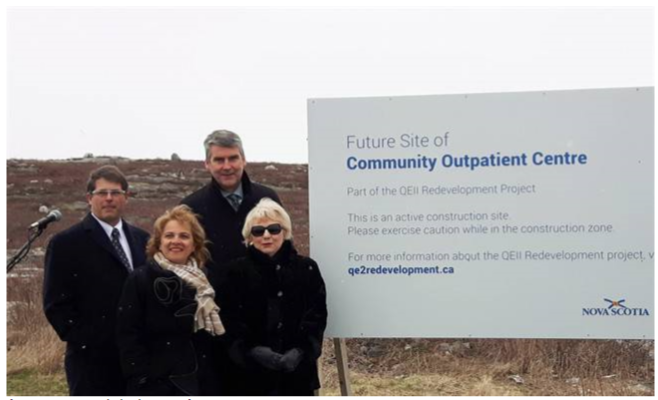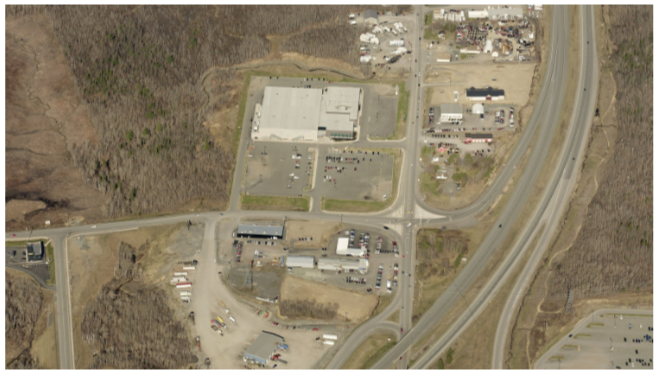
Symptoms of an Election
In the run up to the now transpiring Nova Scotia provincial election, our governing party engaged in the time-honoured tradition of the spending announcement roadshow. A few million for a community centre here, a few million more for an overpass there, culminating finally in the double whammy of a new outpatient facility in suburban Halifax, and toll-free twinning of several sections of highway.
Unlike most spending announcements, the outpatient facility drew immediate criticism. While the highway twinning has started to attract some rightful critique, the patently foolish choice of locating a medical facility in the retail backlands of a dysfunctional industrial park was apparent to many; not the least of which being senior municipal staff who’d advised the Province of these issues months prior. Embarrassingly, the location is a miserable failure when measured against the Province’s own aging population action plan, Shift, which it had announced along with nearly $14 million in funding mere weeks before.
As an aside: of the opportunities for criticism of the outpatient location, and there are many, the purchase price of the land is not a fruitful one. Without the benefit of knowing the particular details of the deal, the $12.00/ft² paid by the Province for the raw land includes the cost to bring the site to a state of development-readiness. Land in this condition elsewhere in Bayers Lake has sold in the neighbourhood of $11.50/ft², so this is hardly the 12,000% markup insinuated by some reporters and rival politicians. (For future reference, comparing purchase price to assessed values for development land – or any real estate for that matter – can be extremely misleading. Media Types: if you’re looking for a real estate angle on a story, give me a call… I know some people.)
A Bad Prognosis if Left Untreated
So here’s the rub. Atlantic Canada, as we’ve described many times, is facing a serious demographic crunch that will constrain income tax revenue to the provinces, and property tax revenue to municipalities (in Nova Scotia, see Canso, Springhill, Hantsport, and Parrsboro for a preview). Given the scale of these trends, immigration is not likely to alleviate this difficulty. This means public investment utilises increasingly precious dollars; long gone is the time where we could rely on growth to overcome poor decisions.
Yet, public capital spending is and will remain one of the most significant factors in the trajectory of our communities. The provision and location of these facilities influences development trends for decades. A new medical facility is not just a site for convenient patient care. It is also a major employer, and consumer of both public and private services. It generates broader impacts; spinoffs that if harnessed properly can enhance the benefits of other facilities, strengthen neighbourhoods and local business, and mitigate future infrastructure costs. A newly twinned highway is not just a safety improvement for the travelling public, it is a half-billion dollars no longer available to be spent on other priorities. We’ve got to get serious, we’ve got to be scrappy, and we have to be careful to maximise the benefits our public spending generates. Opportunities of an equivalent scale from private-sector activity are few and far between.
By narrowly constraining their site selection study (I presume, as this information is also not publicly available), the government has perhaps saved money on the land for the outpatient facility, only to create far greater costs in the form of municipal servicing expenses, diminished economic spinoff, and foregone social benefits. This short-sightedness is not resigned only to our provincial overlords, municipalities large and small consistently miss opportunities to strengthen and improve neighbourhoods or commercial main streets. At best, we have a habit of placing community facilities in a location that only performs well on measures of land price and vehicular accessibility. At worst, it is directed by decades of parochial bickering and ends up in a location agreed to be equally terrible for everyone.

Prescription
As the highway twinning issue has shown, no “overwhelming public consensus” is going to emerge on any policy or funding choice other than those promising a free lunch. It is going to take political guts to lead the way: the decisions we need to make are pound-wise at the risk of appearing penny-foolish. Better analysis can help identify the optimal site selection and communicate the wisdom of that choice. A paltry million saved in cheap land will pale in comparison to full lifecycle costs of poorly located public infrastructure. The property taxes generated by that good natured economic development project might never recoup its initial cost. And increasingly, methods are available to help quantify and communicate the broad community and economy strengthening effects that government undertakings can create. A complete approach to site selection and capital project analysis in a time where each dollar counts is the difference between spending decisions that achieve lasting public value instead of fleeting public relations.

Remember, an ounce of prevention is worth a pound of cure, and we have the skills required to evaluate your options in the context they deserve. Neil Lovitt, our Senior Manager of Planning & Economic Intelligence can be reached at 429-1811 ext. 349 (HRM), 1 (800) 567-3033 (toll free), or n.
